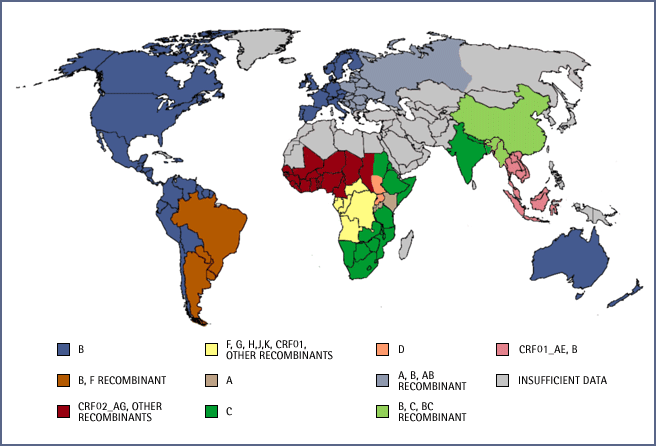This map shows the global distribution and genetic diversity of the nine major subtypes, known as "clades," and recombinants of HIV-1.
Reprinted with permission from IAVI Report, published by the International AIDS Vaccine Initiative.
This map summarizes current understanding of the global distribution of HIV-1 strains.

Ten different epidemic patterns have been observed, as indicated by the different colors.
In the Americas and Western Europe, subtype B predominates everywhere but eastern South America, where there is a substantial proportion of BF recombinants in addition to subtype B. In eastern Europe, subtypes of A, B, and AB recombinant strains dominate the epidemic. Three different patterns have been observed in Asia: subtype C, a mixture of B, C, and BC recombinants, and a mixture of subtype B and CRF01_AE. The Australian epidemic is subtype B.
Africa shows the greatest diversity. Subtype C dominates the South and East, except for significant foci of subtypes A and D, as shown. West and West Central Africa harbor mainly CRF02_AG, alongside a complex array of other recombinants each present at a low frequency. The most complex epidemic is in Central Africa, where rare subtypes and a wide variety of recombinant forms circulate without any discernable predominant strain.
The map is an overview that does not convey full details of HIV-1 subtypes and recombinants in any given location, and demarcates boundaries more distinctly than they exist in reality. A broad swath cutting across Northern Africa, the Middle East, and Central Asia (gray) is essentially devoid of data on HIV-1 subtypes.
IAVI Report
August 2003
Source: Francine E. McCutchan, Henry M. Jackson Foundation (Rockville, Maryland). McCutchan and colleagues are indebted to the many international collaborators who helped develop the data used to generate this map.